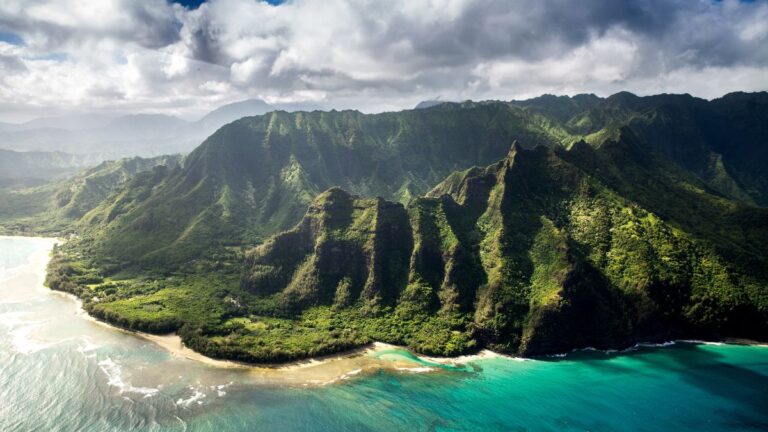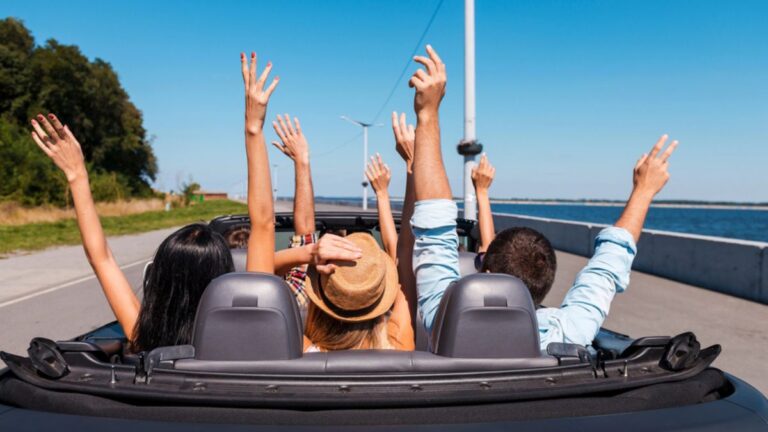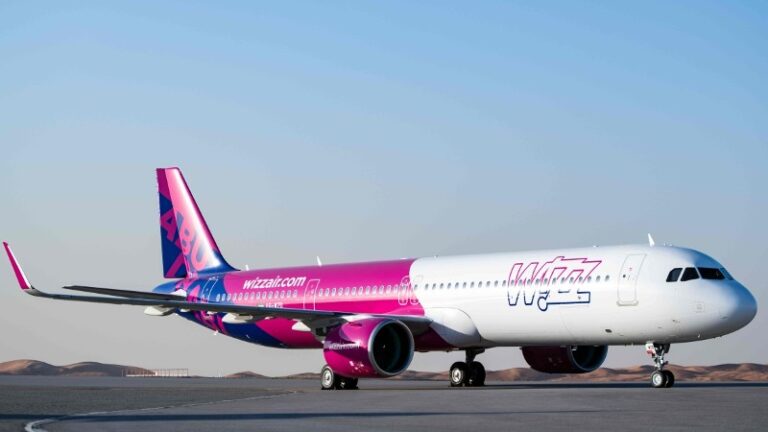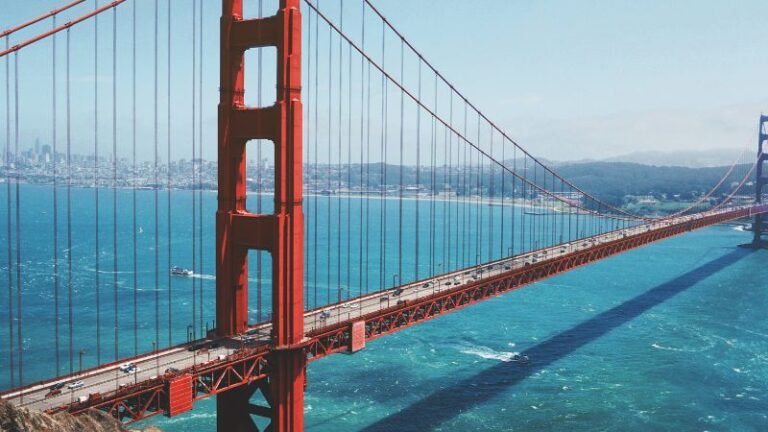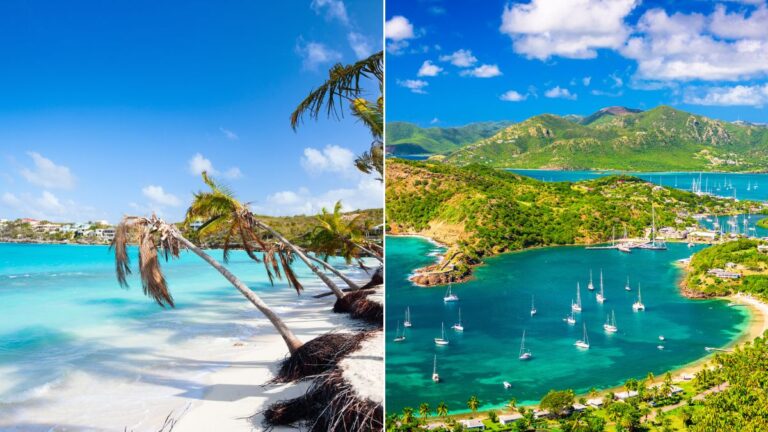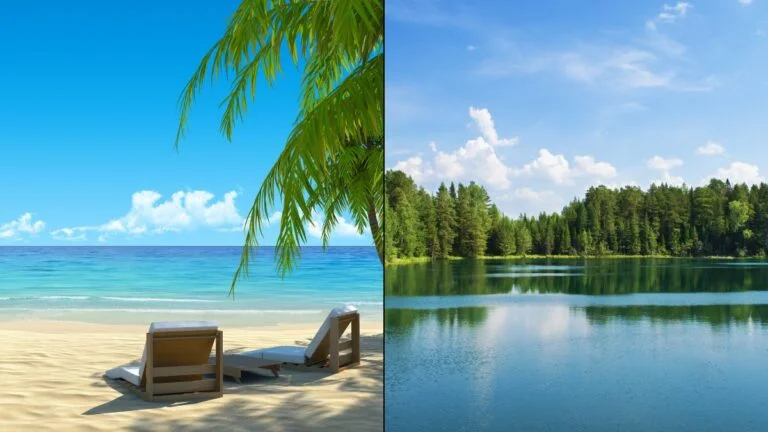Worst Time to Visit Death Valley: The Perils of Summer Extreme Heat

As participants in Amazon Associates and other programs, we earn from qualifying purchases. This comes at no additional cost to you. For more details, see our Affiliate Disclosure.
There’s a raw, ethereal beauty to Death Valley that attracts adventure seekers from around the globe. However, this otherworldly landscape also hides one of nature’s most brutal forces: extreme heat. Each year, countless visitors, lured by the promise of grand vistas and geological wonders, underestimate the valley’s unforgiving summer temperatures.
If you’ve been contemplating a trip to Death Valley, it’s crucial to understand that the sweltering summertime can pose serious risks. In this article, we will dive deep into the reasons why the summer months might be the worst time to plan your visit.
The Unforgiving Summer Temperatures of Death Valley
Situated in the Mojave Desert of California, Death Valley is a land of extremes. Holding the record as the hottest place on Earth, summer temperatures here frequently exceed a blistering 120 degrees Fahrenheit (49 degrees Celsius), with the peak often soaring to a searing 130 degrees Fahrenheit (54 degrees Celsius) or more. The temperature can stay above 100 degrees even after the sun goes down, providing no respite from the heat during night hours.
The parched landscape mirrors the severity of these extreme temperatures, the sun-scorched earth devoid of shade and relief. The heat is relentless, intense, and can be dangerous for the unprepared or unaware. This unforgiving climate results from a combination of the valley’s below-sea-level altitude, lack of cloud cover, and minimal vegetation which contribute to an increased absorption and retention of solar heat.
For context, these temperatures are not just uncomfortable, they can be deadly. The human body struggles to maintain its internal temperature in such extreme conditions, potentially leading to life-threatening conditions such as heatstroke. Next time you consider the appeal of a Death Valley adventure in the summer, remember that this sun-drenched wilderness is not just unforgiving – it can be lethal.
Dangers of Heatstroke and Dehydration
Heatstroke and dehydration are two serious health risks that significantly escalate in Death Valley’s scorching summer climate. As the body struggles to regulate its temperature under such severe conditions, it can lead to a state of hyperthermia, known as heatstroke.
Symptoms of heatstroke include high body temperature, rapid heart rate, nausea, headache, confusion, and even loss of consciousness. It’s a medical emergency that requires immediate treatment as it can rapidly damage your brain, heart, and other vital organs.
Dehydration, too, is a significant concern. When the body loses more fluids than it takes in, it can’t function correctly, leading to dehydration. In Death Valley’s arid environment, where the lack of humidity accelerates evaporation, dehydration can occur much faster than you might expect. Initial symptoms include thirst, darker urine, and fatigue, but if it goes unchecked, it can escalate to dizziness, rapid heartbeat, rapid breathing, sunken eyes, and in severe cases, unconsciousness and death.
One of the deceptive aspects of dehydration is that it can creep up on you before you even realize you’re thirsty. Moreover, in an environment as harsh and dry as Death Valley, you may lose water simply by breathing, further exacerbating the risk. Both heatstroke and dehydration are formidable threats in the intense summer heat, underscoring the importance of thorough preparation and constant vigilance when considering a visit to this extreme environment.
Surviving the Scorching Summer: Practical Tips
While the extreme summer temperatures of Death Valley can pose significant risks, being well-prepared and knowledgeable can help to mitigate these. Here are some practical tips to help you survive the scorching summer:
- Stay Hydrated: Drink plenty of water, even if you don’t feel thirsty. Aim for at least one gallon (4 liters) of water per day, more if you’re physically active. Avoid alcohol and caffeine, as these can exacerbate dehydration.
- Avoid Peak Heat Hours: If possible, avoid being outside during the peak heat hours between 10 a.m. and 4 p.m. Instead, opt for early morning or late evening activities when the sun is less intense.
- Wear Appropriate Clothing: Wear light, loose-fitting clothing that covers your skin, a wide-brimmed hat, and UV-blocking sunglasses. Apply sunscreen generously and frequently.
- Stay Cool: Use a wet towel or bandana around your neck to help cool down. Take breaks in air-conditioned areas if possible.
- Never Leave Anyone in a Parked Car: This is especially crucial for children and pets. The interior of a car can heat up to lethal temperatures in minutes, even with the windows cracked.
- Watch for Warning Signs: Be vigilant about symptoms of heat exhaustion and heatstroke. If you start to feel dizzy, nauseous, or have a headache, get to a cooler place, rest, and hydrate.
- Stay on Designated Routes: It’s easier to get lost and disoriented in extreme heat. Stick to designated paths and trails.
- Inform Others of Your Plans: Let others know where you are going and when you plan to return. Carry a whistle or other signal device in case of emergency.
In the face of Death Valley’s unforgiving summer heat, preparation and prevention are the keys to a safe visit. Keep these tips in mind, and always prioritize safety above all else.
Impact of Extreme Heat on Wildlife and Vegetation
Death Valley’s scorching summer heat also significantly impacts the local flora and fauna, and the adaptations they’ve made to survive are a testament to the resilience of life in the harshest conditions.
Many animal species have adapted to the extreme environment by becoming nocturnal, conducting their activities during the cooler night hours. Examples include the Kangaroo Rat, which can metabolize water from the food it eats and does not need to drink water directly, and the Kit Fox, which digs dens deep into the ground to escape the daytime heat. Reptiles like the Desert Tortoise burrow into the ground or use other animals’ burrows to stay cool.
Bird species such as the Raven have developed unique behaviors to manage the heat, including “gular fluttering” – vibrating their throat muscles to promote heat loss. Meanwhile, insects like the Death Valley Pupfish survive in isolated springs and pools, where water temperatures can reach up to 93 degrees Fahrenheit (34 degrees Celsius).
Plant life in Death Valley has also evolved to withstand the brutal summer heat. The Creosote Bush and the Mesquite Tree have deep root systems that tap into the water table. Some plants like the Desert Holly have waxy coatings on their leaves to reduce water loss.
These adaptations, while fascinating, underscore the intense conditions of Death Valley during the summer. The area’s native organisms have evolved over thousands of years to survive here – human visitors, without these specialized adaptations, need to take the necessary precautions to stay safe.
Alternatives to Summer Visits: Discovering Death Valley’s Cooler Seasons
While Death Valley’s severe summer heat can be dangerous, the park boasts a starkly different atmosphere during its cooler months. The sweltering temperatures give way to more temperate weather, presenting an opportunity for a safer and more comfortable exploration of the valley’s extraordinary features.
Fall (October to November): As the intense summer heat starts to retreat, Death Valley begins to cool down. While still warm during the day, the temperatures are typically more manageable, and evenings can be pleasantly cool. Fall also brings dark skies, perfect for stargazing.
Winter (December to February): Winter is considered one of the best times to visit Death Valley. Daytime temperatures are mild and perfect for hiking. Snow may cap the surrounding mountains, providing a stunning contrast to the desert below. Occasionally, the valley receives rainfall, and if conditions are right, it can result in a spectacular spring wildflower bloom.
Spring (March to May): Depending on winter rainfall, spring can usher in a breathtaking display of wildflowers carpeting the desert floor. The temperatures are still mild enough for outdoor activities during the day, though they can start to rise again in late spring.
Each season provides a unique perspective on Death Valley’s diverse landscapes and natural wonders. Visiting during the cooler months not only ensures a safer trip but also a chance to experience the park’s transformations, offering a richer, more varied appreciation of this extraordinary environment.
Health Considerations for Heat-Sensitive Individuals
The harsh summer temperatures of Death Valley pose an amplified risk to heat-sensitive individuals. These include the elderly, young children, pregnant women, people with chronic illnesses, and those taking certain medications. If you or someone in your party falls into one of these categories, it’s essential to take additional precautions and potentially reconsider a summer visit to Death Valley.
Elderly and Young Children: Both these groups have less efficient thermoregulation systems, meaning they struggle more to adjust their body temperature. This inefficiency can lead to rapid overheating and a higher risk of heat-related illnesses like heat exhaustion and heat stroke.
Pregnant Women: Pregnancy affects the body’s heat regulation and hydration levels, increasing susceptibility to heat-related illnesses. Dehydration can also impact amniotic fluid levels, potentially affecting the unborn baby.
Chronic Illnesses: Certain medical conditions such as heart disease, obesity, diabetes, and respiratory problems can exacerbate the body’s response to heat, making it harder to cope with high temperatures.
Medications: Some medications, including beta blockers, diuretics, antihistamines, and certain psychiatric drugs, can impair the body’s ability to regulate temperature or cause fluid and electrolyte imbalances, increasing the risk in hot weather.
Before planning a trip to Death Valley, heat-sensitive individuals should consult with their healthcare provider to understand the potential risks and learn about any necessary precautions.
Travel insurance that includes emergency medical coverage is highly recommended. Despite the allure of the park’s unique summer landscapes, health and safety should always be the priority.
Planning a Safe Trip: Emergency Contacts and Procedures
Planning a safe trip to Death Valley requires careful consideration, especially during the perilous summer months. Here are some pointers on emergency contacts and procedures that you should familiarize yourself with:
- Emergency Contacts: The general emergency number for the U.S., including Death Valley, is 911. However, cell service in Death Valley is extremely limited. The Furnace Creek Visitor Center (760-786-3200) can also be contacted during operating hours for non-emergencies.
- Limited Cell Service: Because cellular service is spotty at best, consider investing in a satellite phone or a Personal Locator Beacon (PLB) for emergencies.
- Ranger Stations and Visitor Centers: Know the locations and hours of ranger stations and visitor centers. Rangers can provide important safety information and weather updates.
- First Aid Kit: Always carry a well-stocked first aid kit. Include items for heat-related illnesses, like rehydration salts and cooling packs.
- Travel in Groups: If possible, don’t hike or explore alone. A companion can help in case of emergencies.
- Inform Others: Always let someone know your plans, including the routes you plan to take and when you plan to return.
- Travel Insurance: Consider travel insurance that includes emergency evacuation, especially if you have pre-existing health conditions.
- Emergency Procedures: In the event of heat-related illness, move to a cooler place, hydrate, rest, and seek medical attention as soon as possible.
Planning for the worst-case scenario might seem pessimistic, but in a place as unforgiving as Death Valley, it’s a necessity. By familiarizing yourself with these procedures and contacts, you can ensure a safer and more enjoyable visit.
The Consequences of Underestimating Death Valley’s Heat
Underestimating Death Valley’s heat can have serious, and even fatal consequences. While it might be easy to dismiss the warnings and feel invincible against the relentless sun, the reality can be far different.
Physical Consequences: Ignoring the risk of heat can lead to severe physical health issues. These range from mild symptoms like dizziness, nausea, and fatigue, to more serious conditions such as heat cramps, heat exhaustion, and potentially life-threatening heatstroke. Additionally, the risk of severe dehydration, which can also be fatal, is incredibly high.
Getting Stranded: Vehicle breakdowns are common in Death Valley’s extreme heat. High temperatures can lead to overheating engines and blown tires, leaving travelers stranded in hazardous conditions. Rescue might take longer due to the park’s remote location and vast size.
Getting Lost: The intense heat can cause confusion and disorientation, increasing the chances of getting lost. With Death Valley’s expansive and often monotonous landscape, it’s easier than you might think to lose your way, and every minute counts in the scorching heat.
Financial Consequences: Medical evacuations due to heat-related emergencies can be expensive. Without proper travel insurance coverage, you could find yourself facing significant medical bills.
The stories of visitors who’ve underestimated the heat of Death Valley serve as stark warnings. It’s not uncommon for the park to report heat-related illnesses or deaths each year, particularly among visitors who were not prepared for the intense conditions.
It’s a strong reminder that respecting and preparing for the harsh climate of Death Valley is not just recommended – it’s essential for survival.
Re-evaluating the Risks: Is a Summer Visit Worth it?
The unique allure of Death Valley during summer, with its dramatic landscapes baked under an unrelenting sun, can be tempting for adventurers. However, the considerable risks associated with the extreme heat merit a pause for thought. Is a summer visit to Death Valley truly worth it?
Visiting Death Valley in summer presents undeniable hazards, including life-threatening heatstroke, severe dehydration, vehicle breakdowns, and the potential for getting lost in an unforgiving environment. Even with thorough preparation, the severity of the heat can still take visitors by surprise. It’s also worth noting that the extreme temperatures can limit your activities during the day, with the most intense heat often persisting from mid-morning to late afternoon.
On the other hand, Death Valley’s more temperate seasons offer a starkly different experience. The milder temperatures of fall, winter, and spring present an opportunity to explore the park’s unique geological features and diverse ecosystems in a safer, more comfortable environment. Each season offers its own distinct beauty, from potential wildflower blooms in the spring to snow-capped mountains in the winter.
In the end, the decision comes down to a personal assessment of risk versus reward. For those who cherish safety and comfort, the cooler seasons may be the wiser choice. For those who are well-prepared, understand the risks, and feel the call of Death Valley’s fierce summer landscape, a summer visit might still be on the cards. But always remember – no photograph or experience is worth risking your life over.

